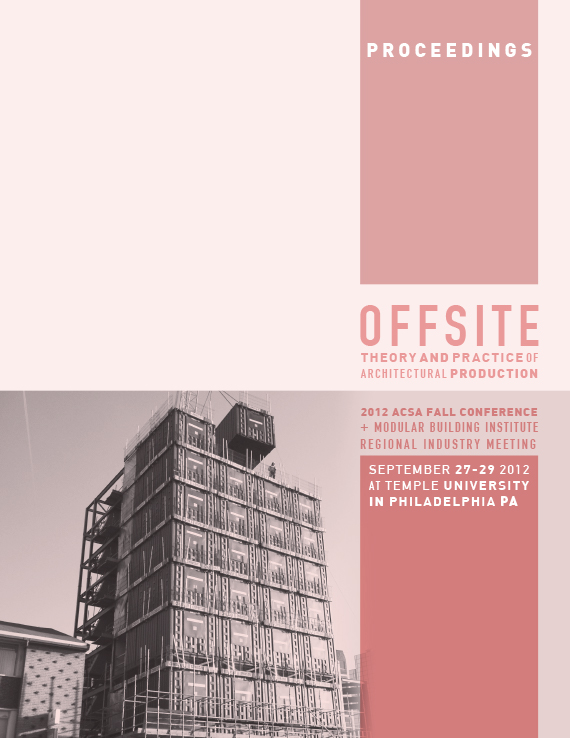Author(s): Anthony Colonna, Kihong Ku & Paul Broadstone
While off-site prefabrication in the construction industry has become synonymouswith efficiency, economy and quality, the authors question if thebenefits of centralized ‘prefabrication’ can be brought closer to the site tomitigate the economic and energy impacts of packaging and transportation.Anecdotal evidence shows that a number of projects have employed nearsite prefabrication strategies to (a) reduce transportation cost; (b) escapeshipping limitations that prevent producing larger units which would bebeneficial to reduce installation time; (c) reduce cost in packing and shipping;(d) reduce construction tolerance accumulation of in-situ assembledcomponents; (e) avoid joint assembly errors; and (f) improve safety andergonomics during site erection. The authors are proposing a paradigmshift from centralized manufacturing to distributed manufacturing that maychange how products are made and delivered to the site. This paper focuseson one of the new methods of distributed manufacturing which is reviewedthrough a detailed case study on multi-trade prefabrication – an innovativeapproach improving the construction of buildings (particularly hospitals) byassembling subcontractors in a local warehouse to construct MEP ceilingracks, patient room bathroom pods, and patient room headwall assemblies.The authors discuss how a company successfully introduced and implementeda multi-trade prefabrication strategy of mechanical, electrical, plumbing (MEP)and drywall trades in a $152-million, 12-story Project. The Project involvedunique engineering, manufacturing, and lean contracting strategies that enabledthe multi-trade prefabrication strategy and contributed to overall qualityimprovements, time and cost savings, and safety enhancements. The use ofBIM for the 3D layout and design of modularized ceiling void modules, the useof a warehouse near the jobsite for multi-trade preassembly, collaboration betweenunion and open-shop contractors, just-in-time delivery of prefab units area few examples of the process innovations. To help the company operationalizenew types of integrated production processes, the authors have investigatedthe project planning, design, procurement, construction processes and haveexamined the benefits of multi-trade prefabrication on project performance.This paper attempts to capture and integrate the lessons learned in this projectto diffuse innovative best practices and develop new value-added businessmodels. As the design and construction community considers fabricationstrategies for the future, the authors discuss the opportunities to considernew business models for construction that allow to take advantage of factorssuch as BIM and engineering capability, an international infrastructure, andwell-developed supply chain capacities. The paper opens up questions abouthow this new multi-trade prefabrication approach can become both viable andprofitable migrating from traditional contracting businesses to value-added engineeringand off-site construction.
Volume Editors
John Quale, Rashida Ng & Ryan E. Smith
ISBN
978-0-935502-85-5

 Study Architecture
Study Architecture  ProPEL
ProPEL 
